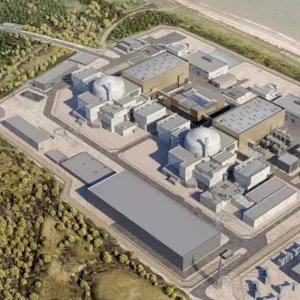The 2.7km long conduit, constructed by contractor Guangdong No. 2 Hydropower Engineering Co required the use of a slurry machine to excavate under six bars of water pressure in Zhanjiang Bay. The TBM, supplied and assembled by Robbins with components and engineering from Mitsubishi Heavy Industries Mechatronics Systems, Ltd. (MHI-MS), was launched in September 2011, the company stated. The TBM excavated up to 27m per day.
"The cutterhead design, layout of the cutters and injection ports were the most important design factors in completing this tunnel project," said Qinghua Shi, chief project engineer for the contractor.
The machine featured a smooth flow cutterhead to allow for easier removal of stones and boulders while avoiding clogging at the face. The mixed ground machine utilised interchangeable knife-edge bits that could be switched out for disc cutters in geology that included abrasive sand, gravel, and silt. The design approach for mixed face conditions is consistent with the Robbins design for mixed face EPB-type machines, the company stated.
"Throughout the project, I felt there were no significant problems that happened on the machine," added Shi. "I am happy that we could operate the machine properly. There were no cutters that needed to be changed, even though this was a long tunnel excavation project. The launch and breakthrough also went very smoothly."
The Zhanjiang Bay Sub-Sea Tunnel will source water from the nearby Jianjiang River to the steel plant on Dong Hai Island. The water supply for the company of 20,000 employees is part of a plan by the Chinese government to improve the quality and output of steel in Guangdong Province.







